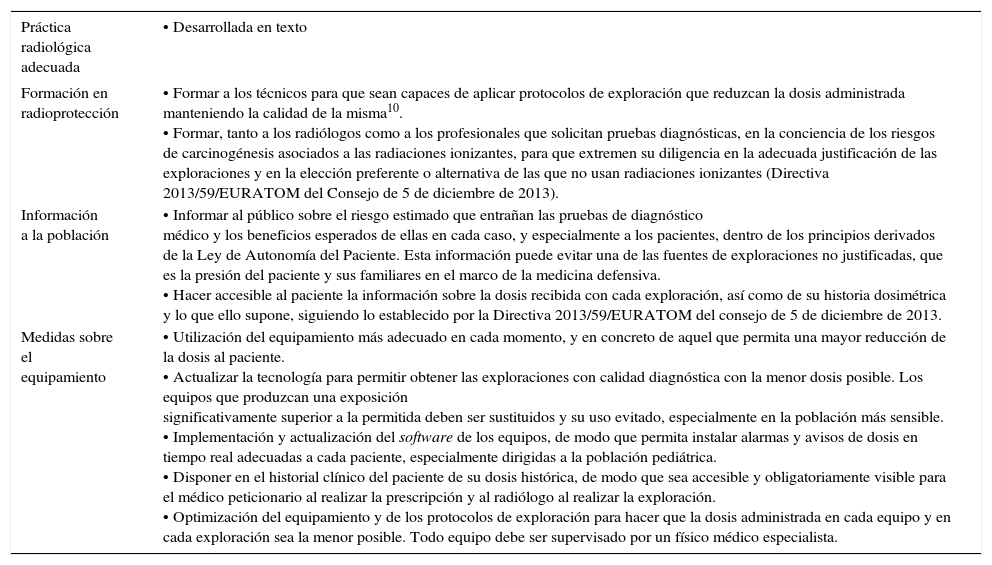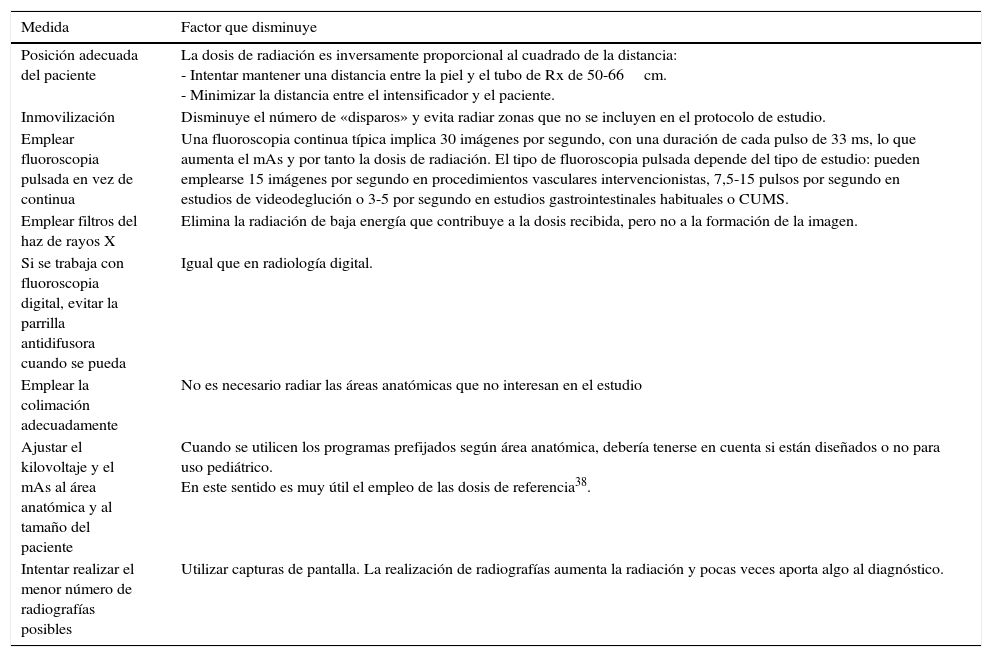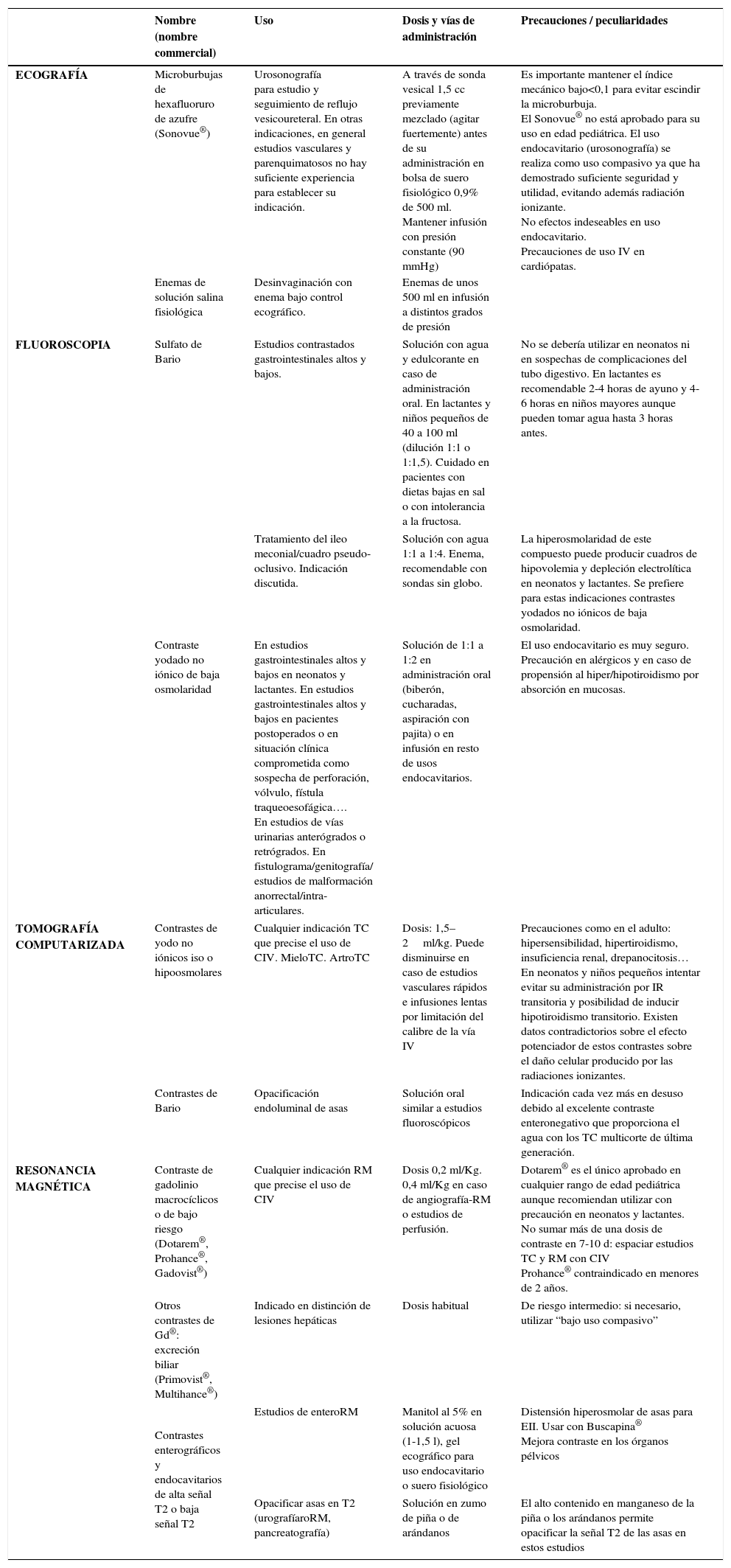La reducción de la radiación ionizante (RI) en el niño es fundamental por distintas causas. Ante una exposición a la misma dosis de radiación, el riesgo de desarrollo de un tumor es mayor en la infancia. Varias estrategias pueden emplearse para reducir la RI. La fundamental es evitar la realización de pruebas innecesarias o no indicadas, elegir una prueba alternativa que no utilice RI, y/o tomar una serie de medidas que reduzcan al máximo la dosis recibida por el paciente, como evitar repetir pruebas, emplear las proyecciones correctas, usar protector, ajustar el protocolo (mAs, Kv o pitch) al volumen del paciente, etc…
En ecografía, se pueden utilizar contrastes sonográficos de uso endocavitario, aunque también se está extendiendo para uso endovascular. En fluoroscopia se deben utilizar de baja osmolaridad, como en TC donde ajustaremos la dosis y la velocidad de inyección al peso del paciente y calibre de la vía periférica respectivamente. En RM tan sólo están aprobados para utilización pediátrica tres tipos de contrastes. En ciertas situaciones clínicas es necesaria la utilización de dosis dobles o de contrastes organoespecíficos, indicaciones que aun no estando probadas en términos de seguridad farmacológica pueden emplearse como uso compasivo.
It is essential to minimize exposure to ionizing radiation in children for various reasons. The risk of developing a tumor from exposure to a given dose of radiation is greater in childhood. Various strategies can be used to reduce exposure to ionizing radiation. It is fundamental to avoid unnecessary tests and tests that are not indicated, to choose an alternative test that does not use ionizing radiation, and/or to take a series of measures that minimize the dose of radiation that the patient receives, such as avoiding having to repeat tests, using the appropriate projections, using shields, adjusting the protocol (mAs, Kv, or pitch) to the patient's body volume, etc…
When contrast agents are necessary, intracavitary ultrasound agents can be used, although the use of ultrasound agents is also being extended to include intravenous administration. In fluoroscopy, contrast agents with low osmolarity must be used, as in CT where we must adjust the dose and speed of injection to the patient's weight and to the caliber of the peripheral line, respectively. In MRI, only three types of contrast agents have been approved for pediatric use. It is sometimes necessary to use double doses or organ-specific contrast agents in certain clinical situations; the safety of contrast agents for these indications has not been proven, so they must be used off label.













